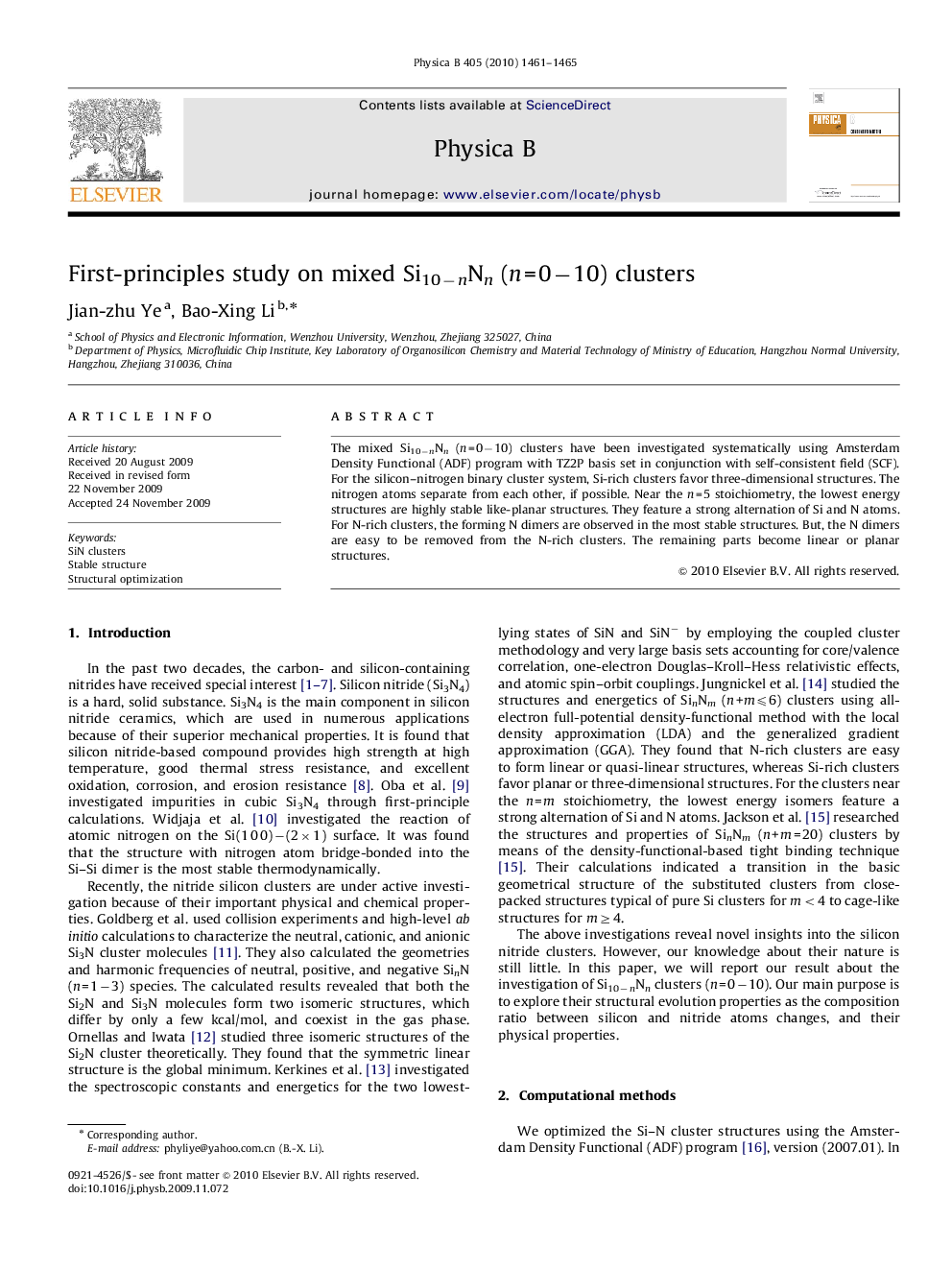| Article ID | Journal | Published Year | Pages | File Type |
|---|---|---|---|---|
| 1812331 | Physica B: Condensed Matter | 2010 | 5 Pages |
Abstract
The mixed Si10−nNn (n=0−10) clusters have been investigated systematically using Amsterdam Density Functional (ADF) program with TZ2P basis set in conjunction with self-consistent field (SCF). For the silicon–nitrogen binary cluster system, Si-rich clusters favor three-dimensional structures. The nitrogen atoms separate from each other, if possible. Near the n=5 stoichiometry, the lowest energy structures are highly stable like-planar structures. They feature a strong alternation of Si and N atoms. For N-rich clusters, the forming N dimers are observed in the most stable structures. But, the N dimers are easy to be removed from the N-rich clusters. The remaining parts become linear or planar structures.
Related Topics
Physical Sciences and Engineering
Physics and Astronomy
Condensed Matter Physics
Authors
Jian-zhu Ye, Bao-Xing Li,
